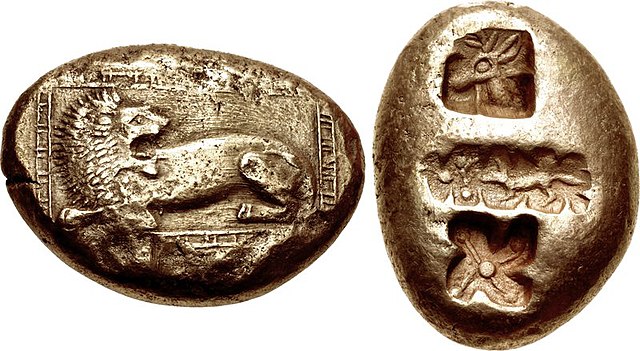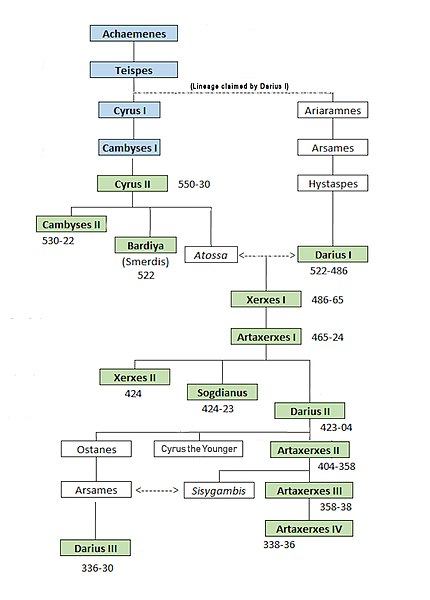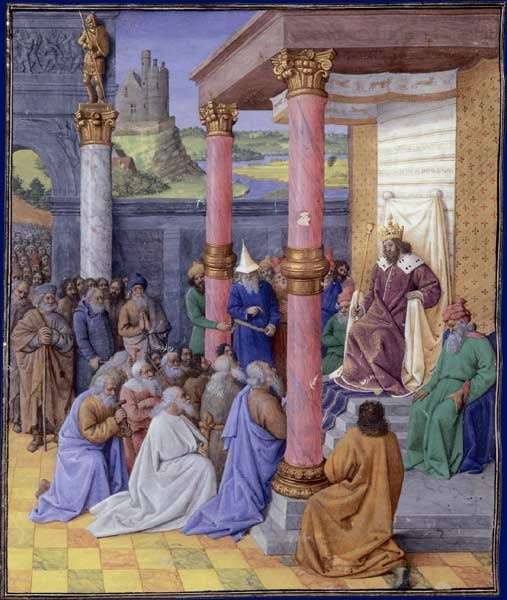Histiaeus, the son of Lysagoras, was a Greek ruler of Miletus in the late 6th century BC. Histiaeus was tyrant of Miletus under Darius I, king of Persia, who had subjugated Miletus and the other Ionian states in Asia Minor, and who generally appointed Greeks as tyrants to rule the Greek cities of Ionia in his territory.
Electrum coinage of Miletus, around the birth of Histiaeus. Circa 600-550 BC.
Coinage of Miletus at the time of Histiaeus. AR Obol (9mm, 1.07 g). Forepart of lion left, head right. Stellate and floral design within incuse square. Late 6th-early 5th century BC.
The Greeks under Histiaeus preserve the bridge of Darius I across the Danube river. 19th century illustration.
The Achaemenid Empire or Achaemenian Empire, also known as the First Persian Empire, was the ancient Iranian empire founded by Cyrus the Great of the Achaemenid dynasty in 550 BC. Based in modern-day Iran, it was the largest empire by that point in history, spanning a total of 5.5 million square kilometres. The empire spanned from the Balkans and Egypt in the west, West Asia as the base, the majority of Central Asia to the northeast, and the Indus Valley to the southeast.
The Achaemenid Empire at its greatest territorial extent, under the rule of Darius the Great (522–486 BC)
Family tree of the Achaemenid rulers.
The Bible recounts Cyrus's liberation of the Israelites held captive in Babylon, allowing them to resettle and rebuild Jerusalem
Cyrus the Great's tomb, located at Pasargadae







